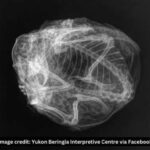If Evolution Is Real, Why Are There Still Monkeys Around Today?
The post If Evolution Is Real, Why Are There Still Monkeys Around Today? appeared first on Healthy Holistic Living.
The enigma of evolution frequently conjures the query: “If humans evolved from monkeys, why are monkeys still around today?” This question, a staple of debates surrounding human origins, is often underpinned by misconceptions and simplistic interpretations of evolutionary theory. Evolutionary biology, with its intricate nuances and complex mechanisms, offers explanations far removed from the linear progression depicted in popular imagery. The notion that humans directly evolved from monkeys not only misrepresents the evolutionary process but also overlooks the rich tapestry of life’s history on Earth.
In this exploration, we delve into the essence of evolutionary biology to dispel prevalent myths and clarify the relationship between humans, monkeys, and our shared ancestors. Through an understanding of the non-linear nature of evolution, the concept of common ancestry, and the vast timeline over which these transformations occurred, we can appreciate the coexistence of humans and monkeys as a natural outcome of divergent evolutionary paths. This article aims to illuminate the intricacies of human evolution, offering a comprehensive perspective on why the presence of monkeys in today’s world is not only compatible with evolutionary theory but expected.
The Misconception of Linear Evolution
One of the most pervasive myths about evolution is the idea of it being a linear process, where one species directly transforms into another in a straight line of progression. This misunderstanding is often encapsulated in the iconic but misleading imagery of a hunched-over chimp evolving step by step into a modern human. Such illustrations, while popular in culture, grossly oversimplify the complex reality of evolutionary biology and mislead the public’s understanding of our origins.
In reality, evolution is better represented by a branching tree rather than a straight line. This tree, known as the phylogenetic tree or the Tree of Life, illustrates how species diverge from common ancestors, creating a vast network of life that is far more intricate than a simple linear progression. Humans did not evolve from the monkeys or apes we see today; rather, both humans and modern apes share a common ancestor that lived millions of years ago. This ancestor was neither human nor the apes we recognize today but a different species from which multiple evolutionary paths emerged.
The concept of linear evolution also fails to account for the natural selection and genetic drift processes that drive the diversification of species. These evolutionary mechanisms work not with the goal of achieving a specific end result but operate based on the survival and reproduction of organisms in response to their environments. Therefore, the presence of modern monkeys and apes alongside humans is a testament to the diverse evolutionary paths that different species have taken, branching out from shared ancestors at various points in the deep past.
Debunking Common Misconceptions about Evolution
One of the most pervasive myths surrounding human evolution is the notion that it follows a linear trajectory, where humans are the pinnacle of a sequence starting from primordial life forms and progressing through various stages of apes and monkeys. This misunderstanding is epitomized by the iconic imagery of the so-called “March of Progress,” depicting a series of figures that morph seamlessly from ape-like creatures to modern humans. Such representations are not only misleading but fundamentally flawed in their depiction of evolutionary processes.
In reality, evolution is best understood as a complex web of branching paths, rather than a straightforward ladder leading from ‘primitive’ to ‘advanced’ organisms. Humans did not evolve from the modern monkeys and apes we see today; rather, all these species have evolved from common ancestors that no longer exist. The idea that if humans evolved from monkeys, there should be no monkeys left is akin to suggesting that if Americans and Canadians come from Europeans, there should be no Europeans today. Both lines of reasoning ignore the basic principles of divergent evolution, where species can originate from a common ancestor and evolve along different trajectories based on varying environmental pressures and genetic mutations.
Furthermore, the expectation to find “half-chimp, half-human” fossils as evidence of human evolution betrays a misunderstanding of how species evolve. Evolution occurs through gradual changes over millions of years, with each generation contributing slight variations that, over vast periods, result in the emergence of new species. The fossil record, though incomplete, offers compelling evidence of this gradual change, with numerous fossils bridging the morphological gap between our ancient ancestors and modern humans, demonstrating a clear continuity rather than abrupt leaps between distinct forms.
The notion of evolution as a linear process leading directly from monkeys to humans is a gross oversimplification. It fails to capture the complexity and richness of the evolutionary tapestry, which is characterized by branches, dead ends, and a multitude of species evolving in parallel rather than in sequence. This section aims to correct these misconceptions by providing a clearer understanding of evolutionary principles and the evidence supporting human evolution from a common ancestor shared with other primates.
The Complex Web of Human Ancestry
Understanding the intricate web of human ancestry requires a departure from the notion of a linear evolutionary path and an embrace of the concept of a branching tree of life. This tree, with its roots deeply embedded in the primordial past, branches out in myriad directions, representing the diverse forms of life that have evolved on Earth. At the heart of this complexity is the story of human evolution, a tale not of direct descent from modern apes, but of shared ancestry and divergent paths.
A Common Ancestor: Humans and chimpanzees, our closest living relatives, share a significant portion of their DNA, indicating a common ancestor that lived approximately 6 to 7 million years ago. This ancestor was neither human nor chimpanzee but a species from which both lineages diverged. Over millions of years, through the process of natural selection, this common ancestor gave rise to distinct lineages—one leading to modern chimpanzees and bonobos, and the other to humans. The fossil record, while incomplete, provides snapshots of various hominid species that existed along this evolutionary journey, offering glimpses into the physical and behavioral traits that have defined human evolution.
Divergence and Diversity: The divergence from this common ancestor did not occur in isolation. The evolutionary tree shows multiple branches, each representing different species that have evolved from common ancestors at various points in history. This branching pattern illustrates the concept of speciation, where populations of a single species evolve independently, accumulating genetic differences that eventually lead to the formation of new species. The presence of other great apes—gorillas, orangutans, and bonobos—alongside humans on this tree underscores the diversity that results from evolutionary processes. Each species represents a different evolutionary experiment, shaped by unique combinations of environmental pressures and genetic drift.
The Fossil Evidence: Fossil evidence plays a crucial role in piecing together the puzzle of human evolution. Each fossil find adds a piece to the story, helping scientists to reconstruct the physical appearance, lifestyle, and environmental context of our ancestors. Among the most significant discoveries are fossils that fill gaps in the evolutionary timeline, bridging the morphological divide between earlier hominids and modern humans. These fossils offer concrete evidence of the gradual changes that occurred over millions of years, from the adaptation of bipedalism to the development of larger brains. While the fossil record may never be complete, each discovery adds depth and detail to our understanding of human evolution.
The story of human evolution is complex and multifaceted, woven from the threads of genetic evidence, fossil discoveries, and the principles of evolutionary biology. By examining the branching paths of our ancestry, we gain insight into the processes that have shaped the human species and our place within the broader tapestry of life on Earth.
Tracing Evolution Through Genetics and Fossil Records
The exploration of human evolution extends beyond the structural remnants of our ancestors to the very essence of our being—our DNA. Genetic analysis has become a cornerstone in the study of evolution, providing unprecedented insights into the relationships between species and the timelines of their divergence. By comparing the genetic sequences of humans with those of other primates, scientists have been able to map out the evolutionary tree with greater accuracy and detail. This genetic evidence reinforces the concept of a common ancestor, highlighting the genetic continuities and variations that have emerged over millions of years.
Fossils, the tangible legacy of life on Earth, serve as another critical piece of evidence in understanding human evolution. Each fossil discovery contributes to the ever-evolving narrative of our past, offering clues about the morphology, behavior, and environmental adaptations of our ancestors. The progression from Ardipithecus, a species walking the line between bipedalism and tree-dwelling, to Australopithecus, with its more human-like walking ability, and eventually to the genus Homo, illustrates a gradual but significant evolution in form and function.
These fossils provide a chronological record of how early hominins adapted to changing environments, developed new survival strategies, and gradually acquired characteristics that are quintessentially human. The synthesis of genetic and fossil evidence paints a comprehensive picture of human evolution. It underscores the complexity of our origins and the myriad factors that have influenced the evolutionary process. As research continues and new discoveries are made, our understanding of where we come from and how we are connected to the tapestry of life on Earth deepens, revealing the intricate story of human evolution as a mosaic of change over time.
Image Sources: Ernst Haeckel
The post If Evolution Is Real, Why Are There Still Monkeys Around Today? appeared first on Healthy Holistic Living.












